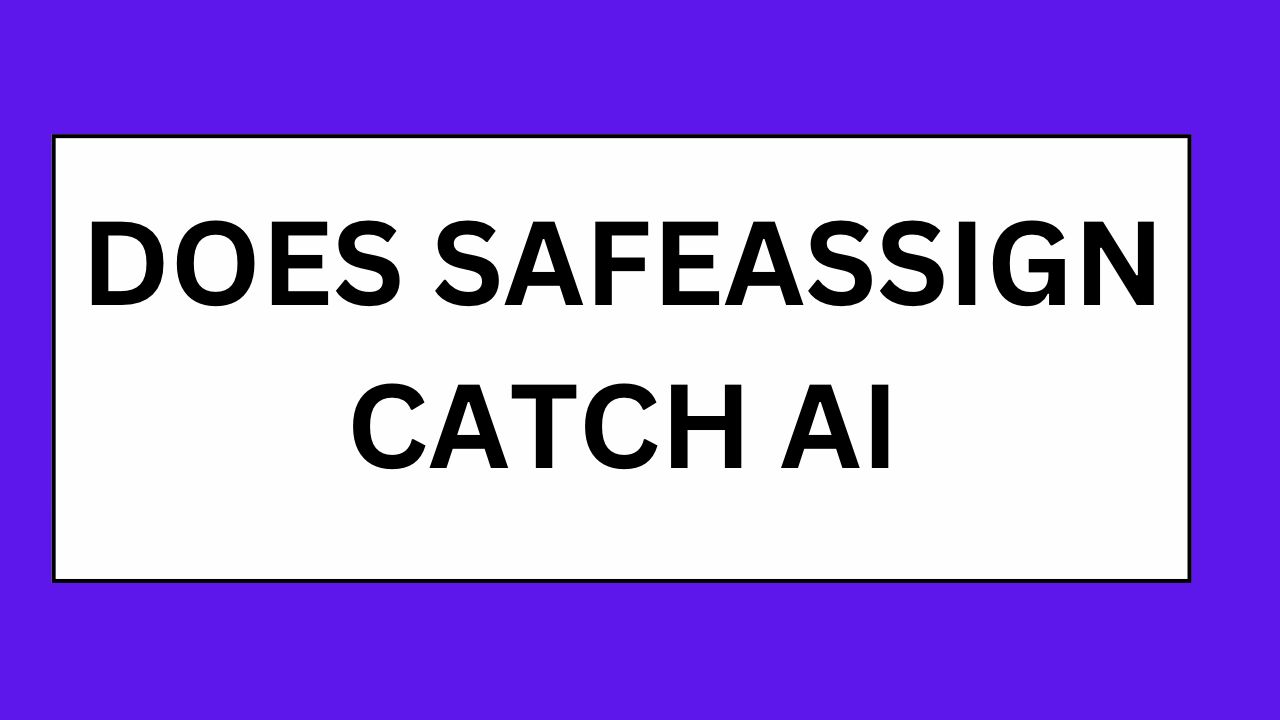As academic institutions continue to embrace digital tools for learning and assessment, plagiarism detection software like SafeAssign has become an essential resource for educators. SafeAssign, a tool integrated within Blackboard’s learning management system, has traditionally been used to identify instances of plagiarism by comparing submitted papers against a database of academic papers, publications, and internet sources. But as AI-generated content becomes increasingly common, educators and students alike are asking:
Does SafeAssign catch AI-generated content?
How SafeAssign Works
Before delving into its ability to detect AI-generated content, it’s essential to understand how SafeAssign operates. SafeAssign uses a text-matching algorithm to compare submitted papers against its vast database of academic publications, papers, and web content. When a match is found, SafeAssign highlights the similarities and generates an originality report, indicating potential plagiarism.
The Rise of AI-Generated Content
The rapid advancement of Artificial Intelligence (AI) in natural language processing has led to the creation of sophisticated AI tools that can generate human-like text. AI models like OpenAI’s GPT series can write essays, articles, and even research papers that are difficult to distinguish from those written by humans. This raises a crucial question: Can traditional plagiarism detection tools, like SafeAssign, effectively identify AI-generated content?
Can SafeAssign Detect AI-Generated Content?
SafeAssign and AI-Generated Content
SafeAssign, like many other plagiarism detection tools, is designed to detect similarities between submitted content and existing works in its database. It does this by analyzing the text for exact matches or close paraphrasing of existing sources. However, detecting AI-generated content presents unique challenges:
- Original AI-Generated Content: If the AI-generated content is entirely original and does not directly copy from existing sources, SafeAssign may not flag it. This is because the text does not have a direct match in SafeAssign’s database.
- Paraphrased Content: AI models can paraphrase existing content to create text that is semantically similar but syntactically different. SafeAssign might catch some of these instances, but it largely depends on how closely the paraphrasing resembles the original text.
- Database Limitations: SafeAssign’s effectiveness is contingent on the comprehensiveness of its database. If AI-generated content is based on new or niche sources not included in SafeAssign’s repository, the tool may not detect it.
Unique Challenges in Detecting AI-Generated Content
The Evolution of Plagiarism Detection
Traditional plagiarism detection tools were built to catch human attempts at copying or paraphrasing existing work. With AI, the challenge is different. AI-generated text can be entirely unique, created by models that generate content based on vast amounts of data they have been trained on. This means that while the content may be influenced by existing work, it is not directly copied, making it harder for tools like SafeAssign to detect.
Detecting AI-Specific Patterns
Some newer tools and techniques are being developed to identify text that is likely to have been generated by AI. These methods often look for patterns in the writing, such as the lack of a clear argument, unusual phrasing, or overuse of certain types of words that AI models might favor. However, these methods are not foolproof and can sometimes result in false positives.
How Educators Can Adapt
Strategies for Addressing AI-Generated Content
As AI-generated content becomes more prevalent, educators may need to adapt their strategies to ensure academic integrity:
- Emphasize Critical Thinking: Assignments that require critical analysis, unique perspectives, or personal experiences are less likely to be effectively completed by AI tools.
- Use Multiple Detection Tools: In addition to SafeAssign, educators might consider using specialized AI detection tools that can better identify AI-generated content.
- Update Academic Policies: Institutions should consider updating their academic integrity policies to address the use of AI tools in academic work.
Relevant FAQs
Is it possible for SafeAssign to catch AI-generated content?
- SafeAssign may catch AI-generated content if it closely resembles existing sources in its database. However, it is not specifically designed to detect original AI-generated text that does not have direct matches.
Can AI content be completely original?
- Yes, AI-generated content can be original and unique. AI models create text based on patterns and information from the data they have been trained on, but they can generate entirely new content that doesn’t directly copy from any existing source.
Are there tools specifically designed to detect AI-generated text?
- Yes, there are emerging tools specifically designed to detect AI-generated content. These tools analyze writing patterns and other indicators that may suggest the content was generated by AI.
What should educators do to address the rise of AI-generated content?
- Educators should emphasize critical thinking in assignments, use multiple detection tools, and update academic policies to address the use of AI in academic work.
The Future of Plagiarism Detection
Adapting to New Realities
As AI technology continues to evolve, plagiarism detection tools will need to adapt. SafeAssign and similar tools may integrate AI detection capabilities or rely on complementary tools to address this challenge. For now, the best approach for educators is to stay informed about the capabilities and limitations of the tools they use and to promote academic integrity through thoughtful assignment design and clear communication with students.
